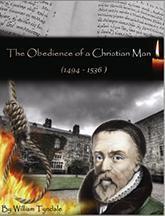

Proponents of this method argue that this is the way Jesus discipled the twelve during His earthly ministry, although critics reject this assertion. Disciple-making movements, on the other hand, press for obedience from the very beginning, even before a profession of faith. Traditional missions generally press first for conversion, demonstrated through faith and repentance, and then follow up with teaching and discipling. This is encapsulated in the phrase, “obedience-based discipleship”. Unfortunately, however, the DMM understanding of “disciples making disciples” differs in two ways which set the entire methodology on a faulty foundation.įirst, DMM discipleship is focused on obedience rather than faith. Individual Christians should bear witness to the Gospel in their private spheres and so participate in the work of evangelism and discipleship. As covenanters we believe not only in the corporate witness of the church, but also in the personal witness of the individual believers to the lordship of Christ. Thus far, Reformed Presbyterians would agree. The first and most foundational element is that of disciples making disciples. The seven necessary elements of disciple-making movements are:ħ. Like a spontaneous chemical reaction, disciple-making movements hope to ignite a cascading chain reaction of disciple-makers that leads to explosive growth compared to slow-moving, traditional church-planting methods. The terminology borrowed from chemistry is appropriate. In Contagious Disciple Making (2014), father and son team David and Paul Watson list seven necessary elements to “catalyze” a disciple-making movement. The Seven Elements of Disciple-Making Movements The RPCNA must seek to learn from some of the missiological insights of disciple-making movements while rejecting those elements that contradict our understanding of Scripture. Ultimately, disciple-making movements build upon a foundation that emphasizes obedience above knowledge, which in turn leads to a devaluation of the preaching and teaching function of the institutional church. However, as with the “Great Century of Missions,” success does not make everything about a methodology right. In a similar way, disciple-making movements have served as a helpful corrective to the traditional missiological model by highlighting the importance prayer and seeking ways to limit barriers to the Gospel in the hardest mission fields. For example, in 1831 the RPCNA created a foreign missions board to take advantage of the efficiency of a specialized board while maintaining the ecclesiastical oversight and authority of the synod. Nevertheless, advocates of a traditional, Reformed understanding of the Great Commission could still rejoice at the progress of the Gospel and learn from the missional advancements that did not contradict their ecclesiology. The great missionary revival that began in the nineteenth century was largely fueled by the determination and efficiency of large, non-denominational mission boards which usurped the role of the institutional church, to whom the command and promise of the Great Commission was primarily given. However, this does not mean that there are not lessons to be learned from contemporary missiology.

We must continue to do missions in a way that aligns with our doctrinal convictions, especially relating to our Presbyterian ecclesiology. As the RPCNA continues to look to new mission fields, how should we evaluate this recent trend in missions? To put this in perspective, one hundred years of traditional Reformed Presbyterian (RP) mission work in Syria resulted in two congregations with less than a thousand members. It is no wonder that the recent missionary strategy known as “Disciple-Making Movements” (DMM) has become increasingly prevalent in Western missionary sending agencies. And all this in a few years, with relatively little direct engagement. The numbers, if they are to be believed, are staggering. 29 June 2021 / Great Commission / Robert Kelbe Disciple Making Movements


 0 kommentar(er)
0 kommentar(er)
